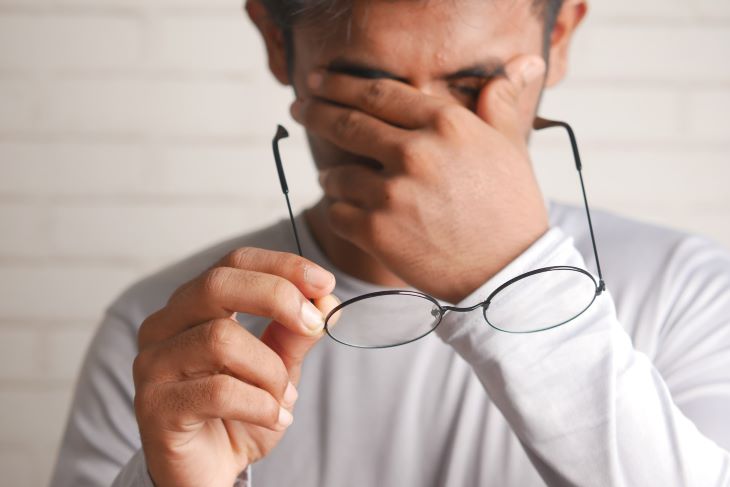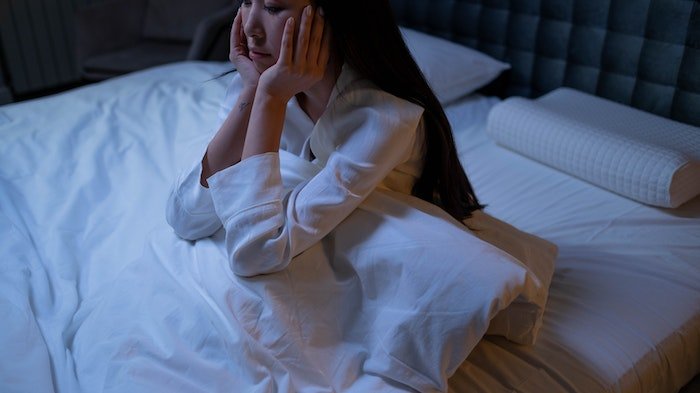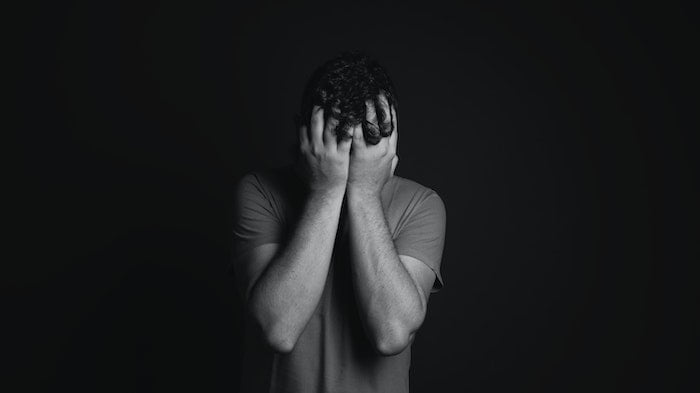How Long Does Xanax Stay in Your System?
Xanax is a brand name for a drug called Alprazolam. [1]
Alprazolam belongs to the family of drugs known as benzodiazepines (often known as benzos for short).
Benzodiazepines are depressant drugs.
This means that they work by decreasing the speed at which messages travel between the body and the brain. [2]
Most benzodiazepines are legal, prescription drugs. [3]
However, there are now what is known as ‘street benzos’ which are drugs similar to or sold as prescription benzodiazepines that can be accessed outside of a medical context.
This means that non-prescription forms of benzodiazepines are illegal and controlled under the Misuse of Drugs Act.
According to this legislation, non-prescription benzodiazepines are listed as class C drugs. [4]
How Common is Xanax Use?

In the UK, the most common form of benzodiazepine prescribed by GPs is diazepam, which is also known as valium.
Diazepam and other benzodiazepines can be prescribed to individuals over the age of 18.
Public Health England published a report in 2019, indicating that 3% of the UK population (1.3 million people) have been prescribed benzodiazepine medication. [5]
Whilst there are few statistics on the illicit use of Xanax and other benzodiazepines in the UK, a recent report has found that street benzodiazepines were involved in 66% of all drug-related deaths in Scotland in 2020. [6]
In a 2020 article published by the British Medical Journal, doctors ‘warned over illicit tablets being sold as benzodiazepines […] that have been linked to recent admissions to hospital and deaths.’ [7]
What is in Xanax?

Prescription Benzodiazepines
Each kind of benzodiazepine has a slightly different structure, but all of them function in a similar way.
Benzodiazepines such as Xanax and valium work as CNS (central nervous system) depressants. [8]
Street Benzodiazepines
Like with any kind of drug that is not accessed via a medical professional, there are risks with purchasing benzodiazepines.
Street Benzodiazepines are usually sold as a specific drug – either alprazolam (Xanax) diazepam (valium) or temazepam.
However, it is very common for the substances sold as these drugs to contain other things as well as benzos, or not contain benzodiazepines at all.
This means that it is nearly impossible to know what the pills you have purchased actually contain. [9]
This means that using any street benzodiazepine is incredibly risky and can cause serious health risks to the user.
How Does Xanax Work?

Xanax (like other benzodiazepines) belong to the depressant drug group.
This means that they slow down the messages sent between the body and the brain via the spinal cord.
This decrease in messages can help to promote feelings of calm. This means that benzodiazepines can cause people to feel more relaxed and drowsy or sleepy.
Benzodiazepines work specifically on GABA (gamma-aminobutyric acid) receptors to achieve these effects. [10]
What is Xanax Prescribed For?

Xanax is one kind of benzodiazepine drug.
Some of the other kinds of benzodiazepines are:
- chlordiazepoxide hydrochloride (librium)
- clonazepam (klonopin)
- diazepam (valium)
- flurazepam (dalmane)
- loprazolam
- lorazepam (atvian
- lormetazepam
- midazolam (versed)
- oxazepam (serax)
- remimazolam
- temazepam (restoril)
- triazolam (halcion)
- quazepam (doral) [11]
This means it is possible to be prescribed one of these medications instead of alprazolam (Xanax) to treat the following conditions.
Anxiety Disorders

Xanax is most commonly prescribed in the UK to help treat both anxiety and panic disorders.
There are several different types of anxiety disorders. [12]
These include:
- general anxiety disorder (GAD)
- panic disorder
- social anxiety disorder
- phobias and related disorders
General Anxiety Disorder (GAD)
Anxiety is a normal part of life.
In our busy and complicated lives, it is to be expected that we should worry sometimes.
However, when worry or stress turns into frequent feelings of dread that are not necessarily directly related to or triggered by life events, that is when anxiety starts to take hold.
Some of the symptoms of a general anxiety disorder include:
- feeling tired
- feeling irritable, agitated or on edge
- struggling to concentrate
- experiencing frequent headaches with no obvious source
- experiencing frequent muscle aches or pains with no obvious source
- experiencing frequent stomach pian with no obvious source
- difficulty with sleeping
- near-constant feelings of worry and concern that feel as though they are controlling or dictating your life [13]
Panic Disorder
Panic disorder is often diagnosed when individuals have frequent and intense panic attacks that begin to control their life.
Individuals with panic disorder may avoid certain situations or plan their life in a specific way to reduce the risk of a panic attack happening.
Panic attacks are feelings of anger and extreme fear.
They have very physical effects, including:
- a very fast heartbeat and increased pulse
- feeling very hot or sweating
- pain in the chest
- shaking, trembling or experiencing tremors [14]
Social Anxiety Disorder
Social anxiety disorder is a specific kind of anxiety that stems from a fear of being judged or thought of negatively by others.
People with a social anxiety disorder may find that they avoid going to social events, spending time with family and friends, or going to work or school
If you have a social anxiety disorder, you may experience:
- intense blushing
- increased heartbeat and pulse
- unexplained pain in the stomach
- the need to avoid eye contact
- rigid, strict posture
- speaking in quiet, gentle tones
- feeling warm, dizzy, or sick [15]
Phobias and Related Disorders
Phobias are more than just being scared or something.
A phobia is a genuine fear of an object, place, feeling or activity.
People with phobias often tend to plan their lives around avoiding their phobic object, place, feeling or activity.
This means that individuals with phobias may:
- experience very strong anxiety
- be unable to rationalise their fear
- find themselves worrying that they may come into contact with their phobic object, place, feeling or activity even though this seems unlikely [16]
Insomnia
Drugs such as Xanax are also prescribed to help treat various sleep disorders, including insomnia, as they can be used as ‘minor tranquillizers’.
However, this is rarely used due to whataddiction. [17]
The Effects of Xanax: Short-term Effects

Short-term Psychological Effects of Xanax
- reduction in stress and anxiety
- feelings of confusion
- feeling excited or joyful
- difficulty thinking straight or focusing
- depression
- feeling lonely
- feeling tired
Short-term Physical Effects of Xanax
- unexplained headaches
- dryness in the mouth
- blurry sight
- feeling dizzy
- a change in bowel function – constipation or diarrhoea
- intense fatigue or drowsiness
The Effects of MDMA: Long-term Effects

Long-term Psychological Effects of Xanax
- depression
- anxiety
- addiction or dependence
- loss of memory
- cognitive impairment
- difficulty sleeping
- difficult or upsetting dreams
- feeling sleepy
- feeling and presenting differently in yourself
- feeling annoyed, irritable or angry#
- feeling paranoid
- acting aggressively towards others
Long-term Physical Effects of Xanax
- unexplained headaches
- sickness or nausea
- rashes on the skin
- increasing or gaining weight
Severe Health Risks
Some research suggests that long-term use of benzodiazepines are linked to the development of more serious health conditions, such as:
- epilepsy
- strokes [18]
- brain tumours [19]
Benzodiazepines in Children

Due to the health risks, and lack of research into the effects of benzodiazepines on children, these types of drugs are rarely prescribed to children.
If a doctor decides to prescribe benzodiazepines to someone under the age of 18, they will be closely monitored. [20]
Benzodiazepines in the Elderly
There is also a growing body of research that suggests benzodiazepines could have particular health risks for elderly people.
Long-term use of these kinds of drugs has been linked to impaired cognition, decreased mobility, increased risk of falling and danger whilst driving in older individuals. [21]
Overdose
Overusing Xanax and other benzodiazepines can lead to overdose. Overdose can also occur if benzodiazepines are mixed with other drugs or alcohol.
Signs of Benzodiazepine overdose include:
- feeling very sleepy, as though sedated
- difficulty breathing – fast and heavy breaths
- feeling jittery, nervous, or on edge
- changeable moods
- losing consciousness
- coma [22]
How Long Does It Take to Feel the Effects of Xanax?

Xanax, like other benzodiazepines, is usually monitored via prescription.
This is usually to ensure that patients do not take the medication for a prolonged period of time.
Benzodiazepines, including Xanax and diazepam, are usually only taken as PRN medication.
This stands for ‘Pro re nata’ and means that medication should only be taken as and when needed, and not at scheduled times.
This is due to the risk that benzodiazepines are known as ‘habit-forming’ drugs. [23]
Benzodiazepines are usually taken in times of intense anxiety or due to a panic attack.
The effects of benzodiazepines are usually felt between 30 minutes to an hour.
Xanax in particular can often cause immediate effects that can last for up to 20 hours. [24]
How Long Does Xanax Stay in Your System?

There are many factors that impact how long a substance will remain inside the body.
Some of these factors include:
- how regularly you use the drug, and how much of it you do use
- the method of use
- if you have used any other medications or alcohol (known as ‘mixing’)
- your body mass, height, and metabolic rate
- your general health
As a general rule, the shorter the time between taking and testing for a drug, the more likely it is that the drug will be identifiable in your system.
This is because, in a shorter period of time between using and providing a sample, you are more likely to still be inside the detection window (this is the period of time that the drug is identifiable in your system, otherwise known as a detection time).
The detection window depends on the different types of drug tests that are being used.
What Kinds of Drugs Testing Can Identify Xanax in My System?

There are several different types of drug tests that can identify if you have Xanax (and/or other benzodiazepines) in your system.
This means that several different pieces of biological matter (material from the human body) can be used to identify the presence of different substances, including illicit drugs.
These include:
- urine tests
- saliva tests
- blood tests
- hair tests
Urine Testing
Benzodiazepines can be identified in your urine for several weeks after use. [25]
Saliva Testing
Benzodiazepines can be identified in your saliva for several hours after use and are thought to be generally less successful in identifying benzodiazepine metabolites after 12 hours have passed. [26]
Blood Testing
Benzodiazepines can be identified in your blood for 1-2 days after use. [27]
Hair Testing
Research into identifying benzodiazepines in hair is limited.
However, in general, drugs can usually be identified in your hair for up to 3 months after use. [28]
How Do Xanax Drug Tests Work?

Drug testing usually works by searching for the presence of a drug itself, or its metabolites.
Metabolites are residual chemicals that are made when your body begins to break down a substance.
It is quite common for metabolites to be present in your biological material for a little while after traces of the drug itself have left.
Each kind of benzodiazepine has its own kind of metabolite.
Alprazolam (Xanax) is identifiable by the metabolites 4-hydroxy and a-hydroxy-alprazolam. If these metabolites are found in your sample, your test will be concluded as positive. [29]
The Legal Side of Drug Testing

There are some circumstances where you may be expected to provide a sample of biological material for a drug test screening.
Testing for Drugs at Work
Under employment law, there are some circumstances where your management can request that you provide a sample for testing.
This is usually an occurrence in jobs that require high standards of health and safety to be maintained (i.e., where people frequently operate heavy machinery).
These tests must be fair and not be run due to prejudice.
You do not need to comply with the testing, but by not doing so, you may be subject to consequences in your workplace. [30]
Testing for Drugs by the Police
The police have the power to request that you provide a sample in certain circumstances.
This is usually when you are involved (or thought to be involved) with certain crimes:
- offences or crimes related to theft (or attempted theft)
- offences or crimes related to robbery (or attempted robbery)
- offences or crimes related to burglary (or attempted burglary)
- offences or crimes related to fraud
- offences or crimes related to stolen goods
- offences or crimes related to the possession of Class A drugs
- any offences or crimes related to the possession of Class A drugs with intent to supply
These crimes are known as trigger offences, as they usually ‘trigger’ the request for a drug test.
You do not need to comply.
However, if you choose not to, there will be legal repercussions – including a fine, or in some cases, a prison sentence. [31]
Getting Help for a Xanax Addiction

Like all kinds of addiction, addiction to Xanax (or another benzodiazepine) is a very complicated experience that can affect all areas of our lives and well-being.
As benzodiazepines are often prescribed to treat various mental health issues such as generalized anxiety disorder, there is a chance that if you use these kinds of medication, you may be at an amplified risk of developing dependence or addiction.
But – addiction is not forever.
You can access support for addiction, and any related or underlying mental health issues or concerns via specialist dual diagnosis treatment.
Some forms of addiction treatment for example can include:
- Acceptance and Commitment Therapy
- Brief Interventions
- Co-dependency Treatment
- Cognitive Behavioural Therapy (CBT)
- Dialectical Behavioural Therapy (DBT)
- Family Therapy
- Group Therapy
- Holistic Therapy/ Alternative Therapy (Art Therapy, Music Therapy, Equine Therapy, etc).
- Individual Therapy (1-1 Therapy)
- Motivational Enhancement
- Motivational Interviewing
- Psychotherapy
- Twelve-Step Facilitation Treatment (TSF)
- contingency management
- therapeutic communities or self-help groups
Find Support Now
You may feel that you are struggling alone.
By reaching out, you can widen your support network and give yourself the best possible chance at working towards long-term recovery with our team of recovery specialists
If you are ready to access support for your use of Xanax, you can contact Rehab Recovery at 0800 088 66 86 or use the online form to request a call back from a member of our specialist team about accessing support at a local benzodiazepine rehab centre.
If you are uncomfortable with speaking over the phone, you can use our free chat service at any time of day, to speak with a professional virtually.
You can begin your journey to regaining control by speaking with a team of medical professionals all trained to know how best to help you.
References
[1] https://bnf.nice.org.uk/drugs/alprazolam/
[3] https://bjgp.org/content/69/680/152
[5] https://www.drugwise.org.uk/
[7] https://www.bmj.com/content/370/bmj.m2995.full
[8] https://www.ncbi.nlm.nih.gov/pmc/articles/PMC1751932/
[10] https://www.ncbi.nlm.nih.gov/pmc/articles/PMC1751932/
[11] https://bnf.nice.org.uk/drugs/alprazolam/
[12] https://www.nimh.nih.gov/health/topics/anxiety-disorders
[13] https://www.bmj.com/content/345/bmj.e7500
[14] https://www.bmj.com/content/332/7547/951
[15] https://www.bmj.com/content/327/7414/515
[16] https://www.bmj.com/content/302/6784/1037
[17] https://adf.org.au/drug-facts/benzodiazepines/https://adf.org.au/drug-facts/benzodiazepines/
[18] https://pubmed.ncbi.nlm.nih.gov/24829937/
[19] https://www.ncbi.nlm.nih.gov/pmc/articles/PMC4602739/
[20] https://www.ncbi.nlm.nih.gov/pmc/articles/PMC4466624/
[21] https://www.ncbi.nlm.nih.gov/pmc/articles/PMC4409441/
[22] https://bestpractice.bmj.com/topics/en-gb/3000222
[23] https://www.ncbi.nlm.nih.gov/pmc/articles/PMC4129247/
[24] https://screening.mhanational.org/content/how-quickly-do-anxiety-meds-work/?layout=actions_d
[26] https://pubmed.ncbi.nlm.nih.gov/24061449/
[27] https://pubmed.ncbi.nlm.nih.gov/8262889/]https://www.urmc.rochester.edu/encyclopedia/content.aspx?contenttypeid=167&contentid=benzodiazepine_bloodhttps://www.ncbi.nlm.nih.gov/pmc/articles/PMC4466624/
[28] https://pubmed.ncbi.nlm.nih.gov/1576379/
[29] https://pubmed.ncbi.nlm.nih.gov/8262889/
[30] https://www.hse.gov.uk/alcoholdrugs/screening-testing-drugs-alcohol.htm




